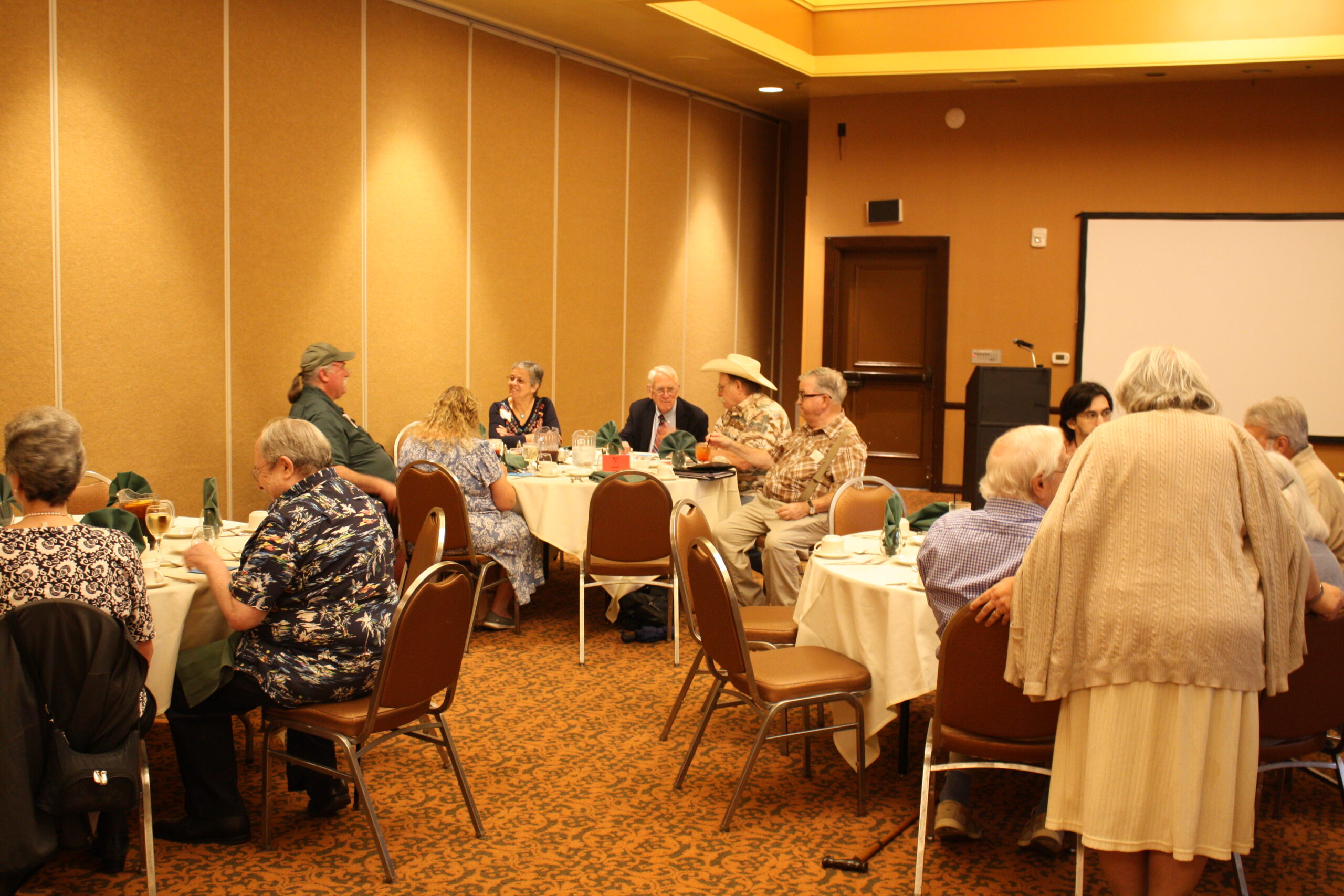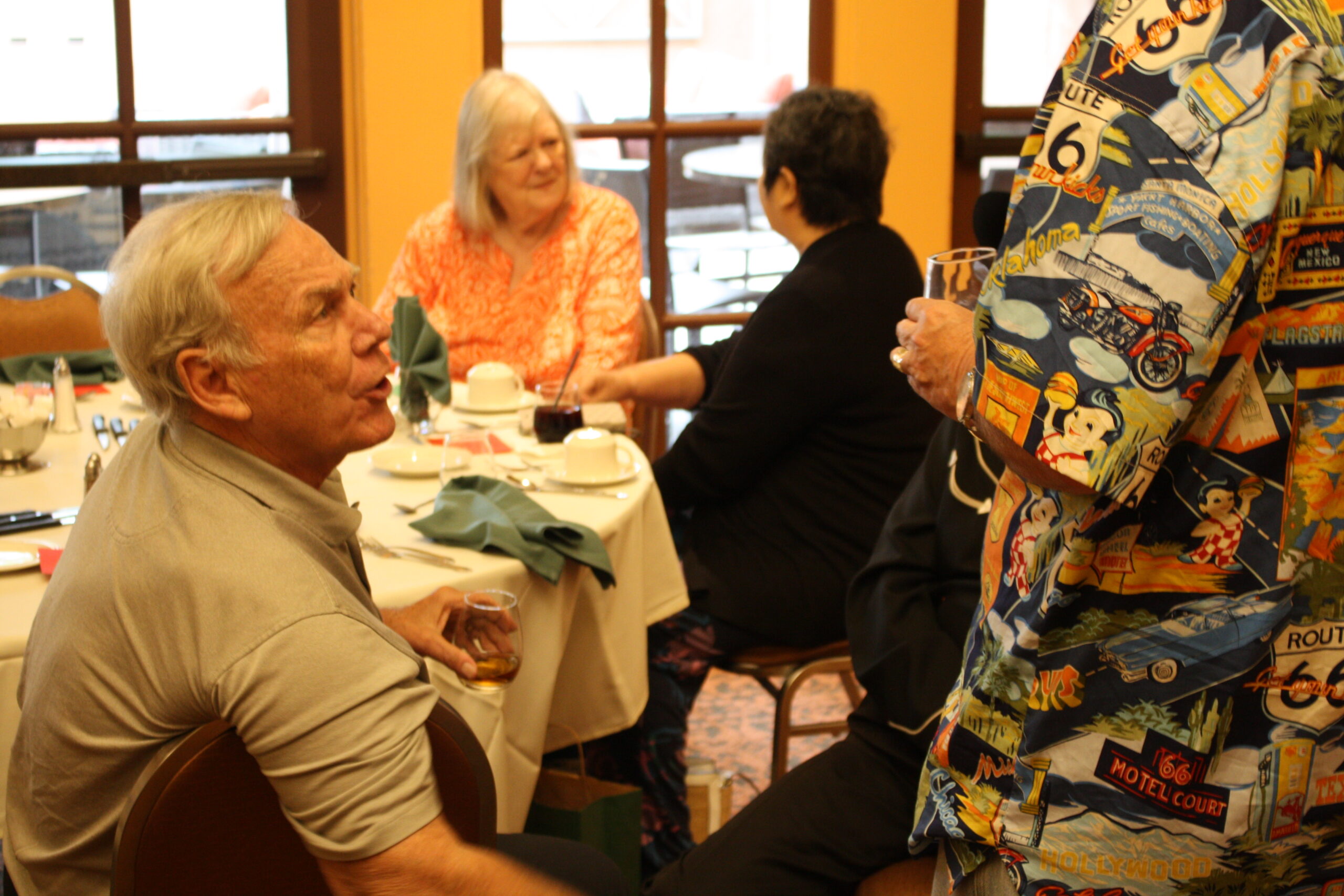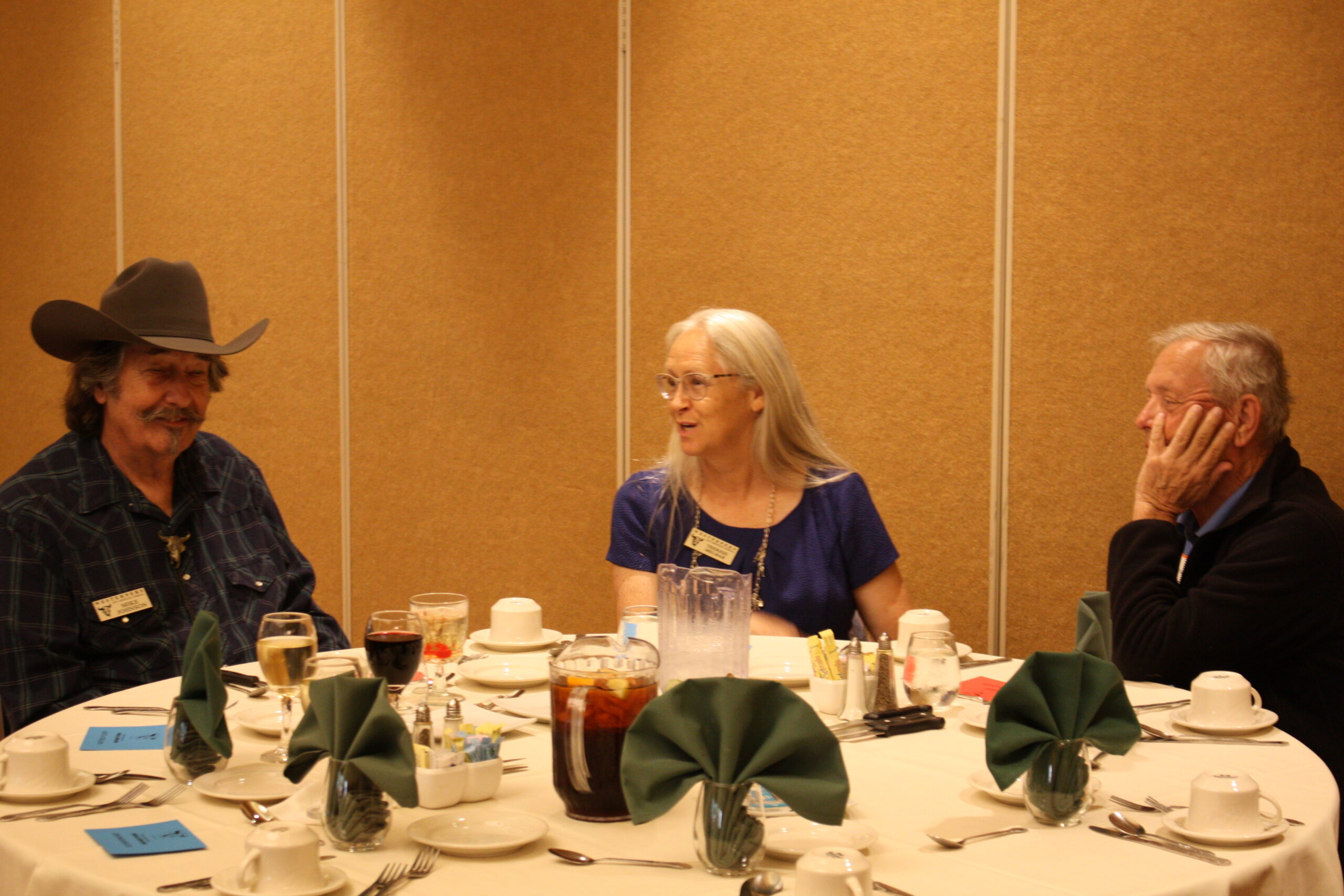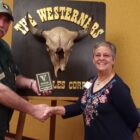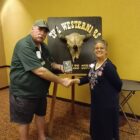Roundup: April 13 2022
Westerners-Aug-2023-Roundup-1
Roundup Synopsis
April’s Roundup saw the corral miss out, yet again, on the long-awaited “Postcards from Mecca” presentation by Steve Lech (don’t worry, it’s coming soon). Johnny-onthe-spot, however, was Brian-on-the-spot, as Dr. Dillon regaled us with his tale of an American hero, Navy Admiral Fightin’ Bob Evans. As Brian told it, it was Evans, not Jesse James nor Billy the Kid, who was the most famed pistolero 120 years ago, and we sure found out why. Fightin’ Bob’s story began in Virginia, where he was born Robley Dunglison Evans, in 1846. After being expelled from school for fighting at age thirteen, Bob’s uncle suggested a career in the Navy. Unfortunately, both Naval Academy seats allotted to Virginia were already filled. Bob agreed to move to Utah, as it was the only territory with allotments available. It was to be a fateful decision. Prior to the Transcontinental Railroad, wagon trains were the name of the game, and so it was with the party that Evans accompanied out west. Wagon trains, however, were vulnerable to Indian raids. Just such an attack befell Evans’ train upon leaving Ft. Laramie, after a wagon got mired in the mud. Thirteen-year-old Evans killed a man in his escape, made it back to the fort, and set out again with just a single wagon. His party was attacked again and Bob was shot in the ankle by an arrow, his foot pinned to the mule he was riding. Eventually, he made it to Salt Lake City where he established residence. Young Evans entered the Naval Academy in 1860. He was trained aboard the USS Constitution, “Old Ironsides.” The Civil War interrupted his tutelage, however, and half his class left to join the Confederacy. Evans stayed true to the Union and ended up fighting his own brother in the rebel navy. As a junior officer taking part in the assault on the “Rebel Gibraltar,” Ft. Fisher, North Carolina, Evans led an assault party of sixty-two sailors and marines. Horribly outgunned and isolated on the beach, his assault force was cut down, with 58 men killed or wounded. Evans was one of only eight men to breach the rebel fort, although he was shot four times for his efforts. He killed the sniper who had wounded him with a miraculous pistol shot from his Whitney .36 Navy revolver. Bob was left for dead on the beach, but was finally rescued and taken to a hospital. He threatened to shoot anyone trying to amputate his legs, so he kept them, along with two bullets that couldn’t be removed. His wounds forced him to use two canes for the rest of his life. Evans moved quickly through the ranks thereafter, taking postings throughout the world, and eventually commanded a gunboat, the USS Yorktown. It was on the Yorktown that he earned his appellation. His refusal to back down during a tense standoff with Chilean warships left him known as “Fightin’ Bob” ever after. After taking a leading role in the largest naval battle of the Spanish-American War, Bob reached the pinnacle of his career when he was given command of the Great White Fleet. Under Admiral Evans’ command, the the Atlantic and Pacific Fleets were combined for the first time in May 1908, in San Francisco Bay. This achievement marked a turning point for San Francisco in its postearthquake rebuilding, and also a bridging of the gulf between America’s East and West. If you’d care to read more about this American hero on both land and sea, you should pick up his autobiographies, A Sailor’s Log and An Admiral’s Log. I’m sure I’m not alone in my anticipation for what Brian Dillon has in store the next time someone calls in sick and he’s called to fill in again. — Alan Griffin


